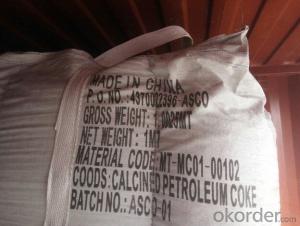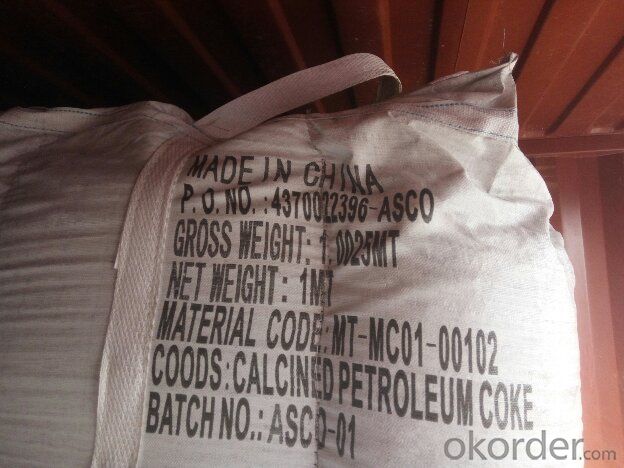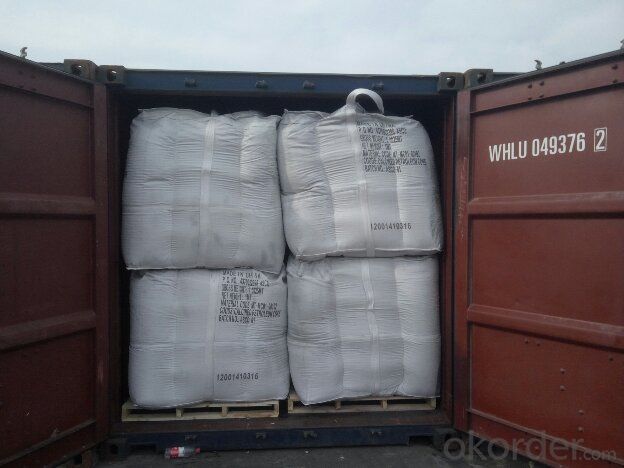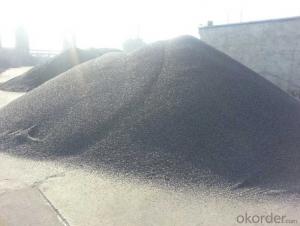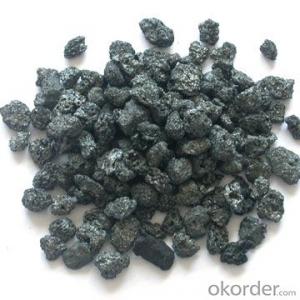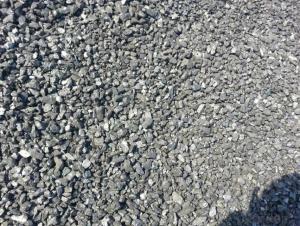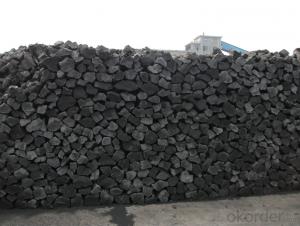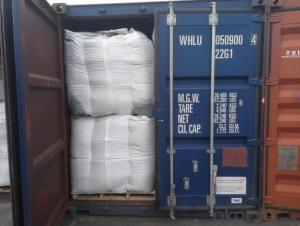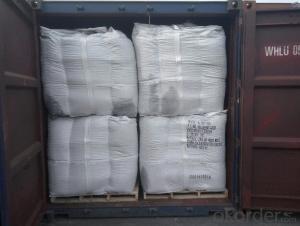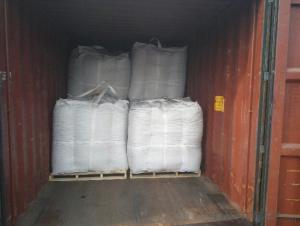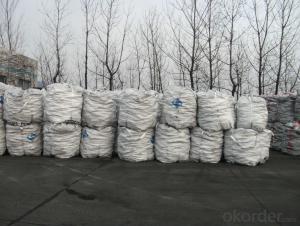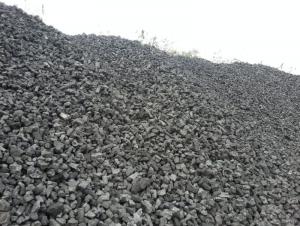Foundry Coke in 80-120mm used for Foundry company
- Loading Port:
- Shekou
- Payment Terms:
- TT OR LC
- Min Order Qty:
- 21.3
- Supply Capability:
- 1013 m.t./month
OKorder Service Pledge
OKorder Financial Service
You Might Also Like
Brief Introduction
Foundry Coke is the main fuel of melting iron in the oven. It can melt the materials in the over, make the iron reach great heat, and keep good air permeability by sustain stock column. Thus, the foundry coke should have the characteristics of big block, low reactivity, small porocity, enough anti-crush strengh, low ash and low sulphur. We welcome foreign clients to visit our factory
The coke handled by our cooperation is made from superior coking coal of Shanxi province. Provided with the advantages of low ash, low sulphur and high carbon. Our coke is well sold in European, American, Japanese and South-east Asian markets. Our owned Coke plant are located in Shanxi Province and supplying of you many kinds of coke.
we supply Foundry Coke long-term, its characteristic is best strength, low sulfur and phosphorus,thermal stability.
Specifications:
ASH % | 8% max | 10% max | 12% max |
V.M.% MAX | 1.5% max | 1.5% max | 2% max |
SULFUR % | 0.65% max | 0.65% max | 0.7% max |
MOISTURE | 5% max | 5% max | 5% max |
Size | 80mm-120mm,80-150,100-150mm, or as request | ||
Features
1. Our quality is always quite good and stable which is producing and packing according to customers' requirements.
2. Putting Client profile into first, achieved mutual benefit.
3. Good partner on business. It's a good and wise choice for customers' to purchase from us. It's our great honor to cooperate with you. It is more -widely used around the world
4. We can supply documents as follows:
- bill of loading,
-Invoice,
-Packing List
-Insurance
-standard inspection pictures of the container as specified by INSPECTORATE
-or more requested by buyer.
Pictures

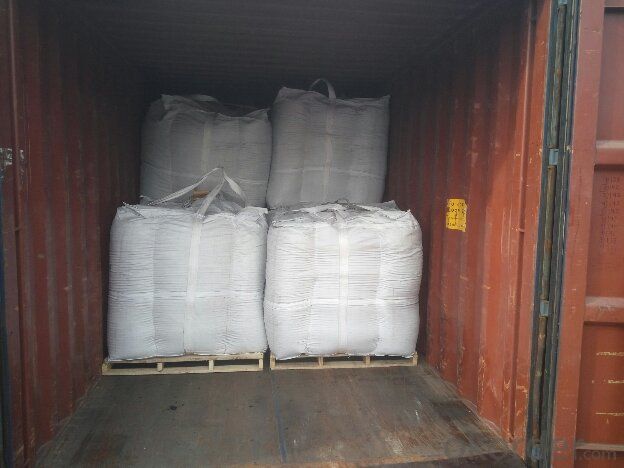
FAQ
1. What is the packing?
In 25kg bag/ In jumbo bags without pallet/ Two jumbo bags with one pallet/ or as customers’ request
2. What is the production capacity?
10 thousand tons per month
3 What is payment term?
Irrevocable LC at sight/ 20% down payment by T/T and 80% against BL copy byT/T/ or to be discussed
4 What is the service?
We will send sample to the third party(CIQ, CCIC, SGS,BV or to be discussed) for checking, and present the test certificate and loading repot of shipment.
- Q: Is carbon a conductor?
- It depends on what kind of material, the cartridge is the conductor, and the coal is not the conductor
- Q: What are the effects of carbon emissions on the stability of ice shelves?
- Carbon emissions contribute to global warming, which in turn leads to the melting of ice shelves. As carbon dioxide is released into the atmosphere, it acts as a greenhouse gas, trapping heat and causing a rise in temperature. This increase in temperature accelerates the melting of ice shelves, ultimately destabilizing them. The loss of ice shelves disrupts the delicate balance of the polar regions, leading to rising sea levels and increased risk of coastal flooding. Additionally, the melting of ice shelves can also contribute to the release of large quantities of freshwater into the ocean, potentially affecting ocean currents and disrupting marine ecosystems. Overall, carbon emissions have a significant negative impact on the stability of ice shelves and the overall health of our planet.
- Q: How does carbon affect food production?
- Carbon affects food production in several ways. Firstly, carbon dioxide is a crucial component for photosynthesis, the process by which plants convert sunlight into energy. Increased levels of atmospheric carbon dioxide can potentially enhance crop yields by providing plants with more raw materials for growth. However, excessive carbon emissions are also responsible for climate change, leading to extreme weather events such as droughts, floods, and heatwaves, which can negatively impact food production. Additionally, the burning of fossil fuels releases carbon dioxide, contributing to air pollution that can harm crops and reduce their productivity. Therefore, while carbon is essential for plant growth, the excessive release of carbon emissions can have detrimental effects on food production.
- Q: What are the consequences of increased carbon emissions on forest ecosystems?
- Forest ecosystems experience significant consequences due to the increase in carbon emissions. One of the most notable effects is the modification of climate and weather patterns. The excessive presence of carbon dioxide in the atmosphere results in the retention of heat, leading to global warming. This rise in temperature can disrupt the delicate equilibrium of forest ecosystems. The warmer temperatures can cause shifts in the distribution and composition of tree species, as some may struggle to adapt to the changing conditions. Another outcome of the rise in carbon emissions is the acidification of rainwater. When carbon dioxide combines with water vapor, it creates carbonic acid, which can fall as acid rain. Acid rain has detrimental impacts on forest ecosystems, as it extracts vital nutrients from the soil and damages tree leaves and other vegetation. This weakens the overall health of the forest and makes it more susceptible to diseases and pests. Moreover, increased carbon emissions contribute to the intensification of wildfires. Higher temperatures and drier conditions provide an ideal environment for fires to spread and occur more frequently. Forests that have evolved to withstand natural fire patterns may struggle to cope with the increased intensity and frequency of these fires. This can result in the loss of biodiversity, destruction of habitat, and long-term degradation of forest ecosystems. Lastly, increased carbon emissions contribute to the phenomenon known as ocean acidification, where excess carbon dioxide is absorbed by the oceans. This acidification can impact the well-being of coastal and marine ecosystems, which are intricately connected to forest ecosystems. Many forest ecosystems, such as mangroves and salt marshes, serve as important nursery habitats for marine species. If these forest ecosystems decline due to carbon emissions, it can have cascading effects on the health and productivity of coastal and marine ecosystems. Overall, the increase in carbon emissions has wide-ranging consequences on forest ecosystems. It alters climate patterns, causes acid rain, intensifies wildfires, and affects coastal and marine ecosystems. These impacts not only harm the trees and vegetation within the forests but also disrupt the delicate balance of the entire ecosystem, resulting in the loss of biodiversity and long-term degradation. It is crucial to mitigate carbon emissions and promote sustainable practices to minimize these consequences and preserve the health and integrity of forest ecosystems.
- Q: What are the effects of carbon emissions on the Arctic ecosystem?
- Carbon emissions have significant effects on the Arctic ecosystem. The increased levels of carbon dioxide in the atmosphere contribute to global warming, causing the Arctic to warm at a faster rate than the rest of the world. This leads to the melting of sea ice, loss of permafrost, and rising sea levels. These changes disrupt the delicate balance of the Arctic ecosystem, affecting various species, including polar bears, walruses, and seals, as well as their prey. Additionally, the acidification of the oceans due to carbon emissions further impacts marine life, such as plankton and shellfish. Overall, carbon emissions have detrimental consequences for the Arctic ecosystem, threatening its biodiversity and functioning.
- Q: How does carbon contribute to the color of gemstones?
- Gemstone color is influenced by carbon, a vital element. Carbon's presence in a gemstone's crystal lattice structure allows it to absorb specific light wavelengths and reflect others, resulting in its distinct color. The arrangement of carbon atoms within the gemstone's structure can excite electrons, leading to the absorption of certain colors of light. This absorption process determines the gemstone's color, as the remaining wavelengths are reflected back to our eyes. For instance, diamonds can exhibit color variations, ranging from colorless to yellow or even fancy shades like blue or pink, due to the presence of nitrogen impurities. Similarly, in gemstones like rubies and sapphires, traces of carbon produce a spectrum of colors, spanning from red to blue, depending on the concentration and arrangement of these carbon impurities. Thus, carbon plays a vital role in the color and visual appeal of diverse gemstones.
- Q: How does carbon dioxide affect ocean acidity?
- Carbon dioxide affects ocean acidity through a process known as ocean acidification. When carbon dioxide is released into the atmosphere through human activities such as burning fossil fuels, a significant portion of it is absorbed by the oceans. This excess carbon dioxide reacts with seawater to form carbonic acid, which then dissociates into hydrogen ions and bicarbonate ions. This increase in hydrogen ions decreases the pH of the ocean, making it more acidic. The increased acidity of the ocean has several detrimental effects on marine life. For example, it hampers the ability of marine organisms such as corals, shellfish, and plankton to build and maintain their calcium carbonate structures, such as shells and exoskeletons. This can lead to reduced growth rates, weakened structures, and increased mortality rates for these organisms. Ocean acidification also affects the survival and reproduction of many species, including fish and other marine animals. The changes in water chemistry can disrupt their physiological processes, impairing their ability to navigate, find food, and avoid predators. Additionally, the increased acidity can affect the behavior and development of some species, leading to altered ecosystems and potential declines in biodiversity. Furthermore, ocean acidification can have cascading effects on the entire marine food web. As the base of the food chain, phytoplankton and other primary producers may be negatively impacted by the changing ocean chemistry, which in turn affects the organisms that depend on them for food. This disruption can have far-reaching consequences for the entire ecosystem, including commercially important fish species and the livelihoods of coastal communities that rely on them. In summary, carbon dioxide emissions contribute to ocean acidification, which has a wide range of detrimental effects on marine life and ecosystems. Understanding and addressing this issue is crucial to protect the health and sustainability of our oceans and the countless species that depend on them.
- Q: How does carbon monoxide affect human health?
- Human health can be severely impacted by carbon monoxide, a highly toxic gas. When we breathe it in, carbon monoxide enters our bloodstream and binds with hemoglobin, the molecule responsible for delivering oxygen to our cells. This binding is incredibly strong and hampers the effective delivery of oxygen, resulting in a condition known as carboxyhemoglobinemia. The symptoms of carbon monoxide poisoning can vary depending on the concentration and duration of exposure. Initially, individuals may experience mild symptoms like headaches, fatigue, dizziness, and nausea. However, if exposure continues or occurs at higher concentrations, these symptoms can escalate to confusion, impaired judgment, loss of consciousness, and even death. One of the most dangerous aspects of carbon monoxide is its ability to go unnoticed, as it lacks color, odor, and taste. This makes it difficult to detect its presence without proper monitoring equipment. Carbon monoxide poisoning can arise from various sources, including faulty heating systems, poorly ventilated appliances, and running engines in enclosed spaces. Prolonged or repeated exposure to carbon monoxide can result in long-term health consequences. It can lead to neurological damage, memory loss, cognitive impairment, and even permanent brain damage. Additionally, it can worsen existing cardiovascular conditions, increasing the chances of heart attacks and strokes. To safeguard ourselves from carbon monoxide poisoning, it is crucial to ensure proper ventilation and functional carbon monoxide detectors in our homes and workplaces. Regular maintenance of appliances and heating systems is also essential to minimize the risk of leaks. Recognizing the symptoms of carbon monoxide poisoning and seeking immediate medical attention are vital in preventing severe health outcomes.
- Q: Carbon fiber refractory?
- 3, pre oxidized carbon fiber cloth, can withstand 200--300 degrees of high temperature
- Q: The main difference between steel and iron is the difference in carbon content
- The essential difference between steel and iron is that there is a difference in carbon content.1, steel, is a carbon content, mass percentage of 0.02% to 2.04% between the ferroalloy. The chemical composition of steel can have great changes, only the carbon steel is called carbon steel (carbon steel) or ordinary steel; in actual production, steel tend to use different with different alloy elements, such as manganese, nickel, vanadium and so on;2 iron is a chemical element. Its chemical symbol is Fe. It has an atomic number of 26. It is the most common metal. It is a kind of transition metal. A metal element with a second highest crustal content.Extension of knowledge point:Iron into pig iron and wrought iron. Wrought iron, steel and cast iron is an alloy of iron and carbon with the carbon content difference. Generally less than 0.2% carbon content that wrought iron or iron, the content of 0.2-1.7% in the steel, is iron content of more than 1.7%. Soft wrought iron, good plasticity, easy deformation, strength and hardness were lower, not widely used; iron carbon, hard and brittle, almost no plastic; steel pig iron and wrought iron with two kinds of advantages, widely used for human.
Send your message to us
Foundry Coke in 80-120mm used for Foundry company
- Loading Port:
- Shekou
- Payment Terms:
- TT OR LC
- Min Order Qty:
- 21.3
- Supply Capability:
- 1013 m.t./month
OKorder Service Pledge
OKorder Financial Service
Similar products
Hot products
Hot Searches
Related keywords
